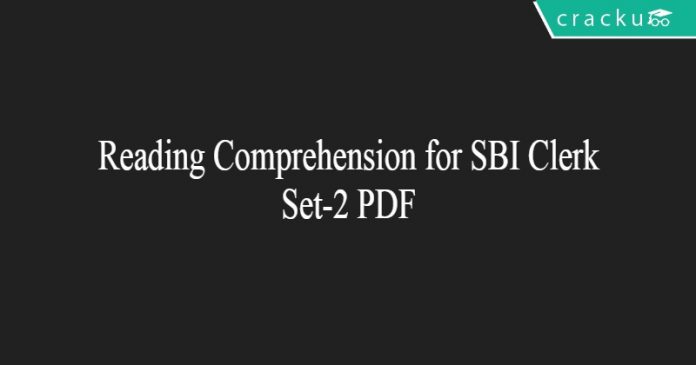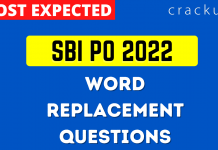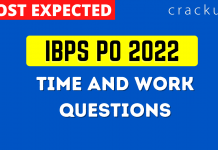Reading Comprehension for SBI Bank Clerk Exam PDF Set-2:
Download Reading Comprehension for SBI Exam PDF Set-2
75 SBI Clerk Mocks & Sectionals – Rs. 199
Download all SBI Clerk questions and Answers PDF
Take a Free SBI Clerk online mock test
Instructions:
Read the following passage carefully and answer the question given below it.
In a reversal of the norm elsewhere, in India policymakers and economists have become optimists while bosses do the worrying. The country’s Central Bank has predicted that the country’s economy is likely to grow at a double-digit rate during the next 20-30 years. India had the capability with its vast labour and lauded entrepreneurial spirit. But the private sector, which is supposed to do the heavy lifting that turns India from the world’s tenth largest economy to its third largest by 2030, has become fed up.
Business people often carp about India’s problems but their irritation this time has a nervous edge. In the first quarter of 2011, GDP grew at an annual rate of 7.8 percent; in 2005-07, it managed 9-10 percent. The economy may be slowing naturally as the low-interest rates and public spending that got India through the global crisis are belatedly being withdrawn. At the same time, the surge in inflation caused by exorbitant food prices has spread more widely, casting doubt over whether India can grow at 8-10 percent in the medium term without overheating.
In India, as in many fast-growing nations, the confidence to invest depends on the conviction that the long-term trajectory is intact, and it is that which is in doubt. Big Indian firms too. Sometimes, seem happier to invest abroad than at home, in deals that are often hailed as symbols of the country’s growing clout but sometimes speak to its weaknesses—purchases of natural resources that India has in abundance but struggles to get out of the ground. In fact, a further dip in investment could be self- fulfilling: if fewer roads, ports and factories are built, this will hurt both short-term growth figures and reduce the economy’s long-term capacity.
There is a view that because a fair amount of growth is assured the government need not try very hard. The liberalisation that began in 1991 freed markets for products and gave rise to vibrant competition. At the same time what economists call factor markets, those for basic inputs like land, power, labour, etc., remains unreformed and largely under state control, which creates difficulties. Clearances today can take three to four years, and many employers are keen to replace workers with machines despite an abundance of a labour force. This can be attributed to labour laws that are inimical to employee creation and an education system that means finding quality manpower a major problem. In fact, the Planning Commission concluded that achieving even nine per cent growth will need marked policy action in unreformed sectors. Twenty years ago it was said that the yardstick against which India should be measured was its potential, and it is clear that there remains much to do.
Question 1:
Why are employers reluctant to hire Indian labour force?
(A) India’s labour force is overqualified for the employment opportunities available.
(B) High attrition rate among employees stemming from their entrepreneurial spirit
(C) Labour laws are not conducive to generating employment.
a) Only (C)
b) All (A), (B) and (C)
c) Only (A) and (C)
d) Only (A) & (B)
e)None of these
SBI Clerk Previous question Papers
SBI Clerk expected Cutoff 2018
Question 2:
What is the state of India’s basic input sectors at present?
a) These sectors attract Foreign Direct Investment because of their vast potential.
b) These sectors are lagging as projects are usually awarded to foreign companies.
c) These sectors are stagnating and badly in need of reforms.
d) These sectors are well regulated as these are governed by the State.
e)None of these
Question 3:
Which of the following can be said about the Indian economy at present?
a) It can comfortably achieve double-digit growth rate at present.
b) High food prices have led to overheating of the economy.
c) Citizens are affluent owing to laxity in regulation.
d) Private sector confidence in India’s growth potential is high.
e)Unreformed sectors are a drag on economic growth.
Question 4:
What impact has the GDP growth of 7.8 percent had?
(A) Indian Industry is anxious about India’s economic growth.
(B) India has achieved status as the world’s third-largest economy at present.
(C) Foreign investment in India has drastically increased.
a) Only (A)
b) All (A), (B) and (C)
c) Only (A) and (C)
d) Only(A) and (B)
e)None of these
Question 5:
Which of the following is most opposite in meaning of the word ‘marked’ given in bold as used in the passage?
a) Decreased
b) Ignored
c) Clear
d) Assessed
e)Imperceptible
SBI Clerk Free Practice Questions
Solutions (1 to 5)
1) Answer (a)
As mentioned in the education system and labour laws are faulty and hinder employers from recruiting from the Indian labor force.
It can be found in this line towards the end of the passage, ‘This can be attributed to labour laws that are inimical to employee creation and an education system that means finding quality manpower a major problem.’
2) Answer (c)
The passage says – At the same time what economists call factor markets, those for basic inputs like land, power, labour etc, remains unreformed and largely under state control, which creates difficulties.
So, option C is correct.
3) Answer (e)
The passage ends saying that the unreformed sectors are affecting the growth rate of the country. So, option E is correct.
4) Answer (a)
“Business people often carp about India’s problems but their irritation this time has a nervous edge. In the first quarter of 2011, GDP grew at an annual rate of 7.8 percent; in 2005-07, it managed 9-10 percent.”
According to above lines of the paragraph, only statement A follows.
Hence, answer will be A
5) Answer (e)
Marked in the passage is used to indicate policy action that is very clear and obvious. Imperceptible is opposite in meaning to marked.



![SBI PO Puzzles Questions PDF [Most Important] _ Puzzles Questions](https://cracku.in/blog/wp-content/uploads/2022/10/Puzzles-Questions--218x150.png)

